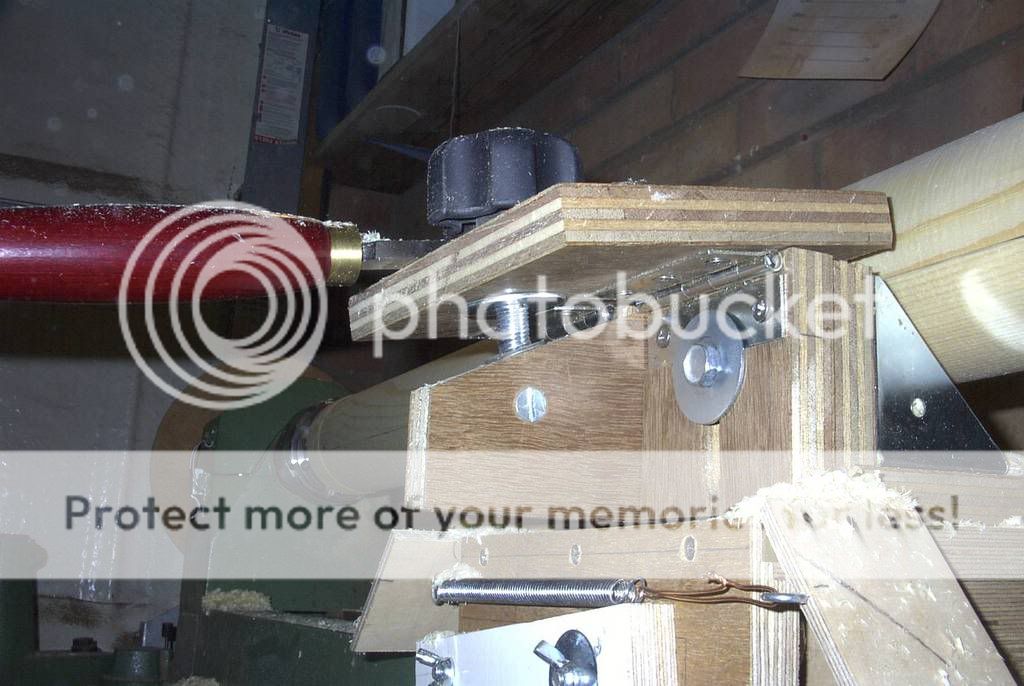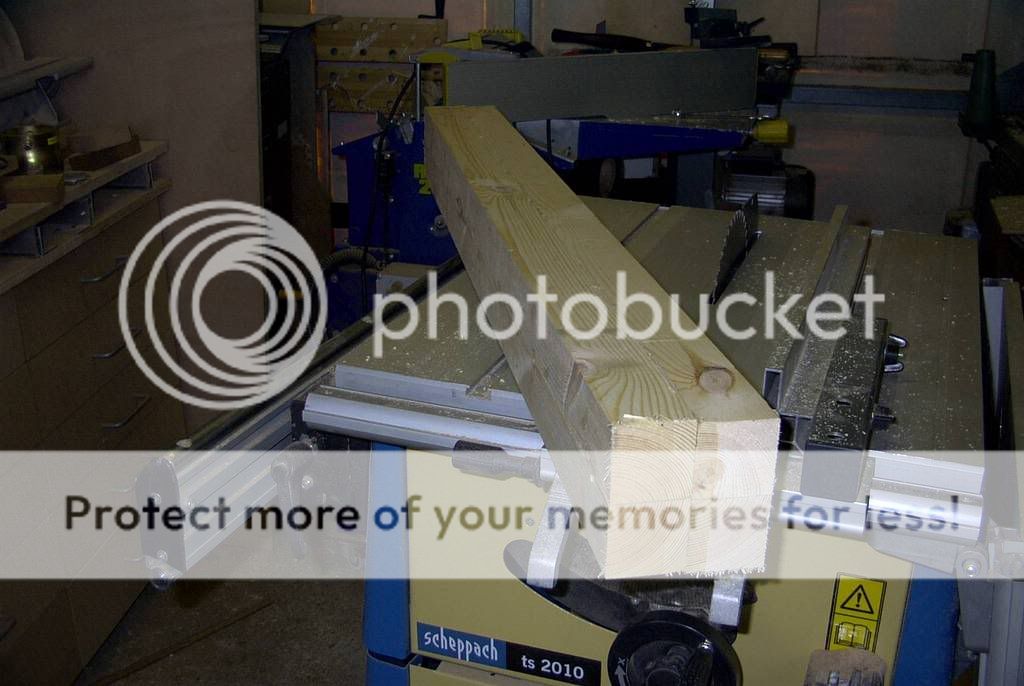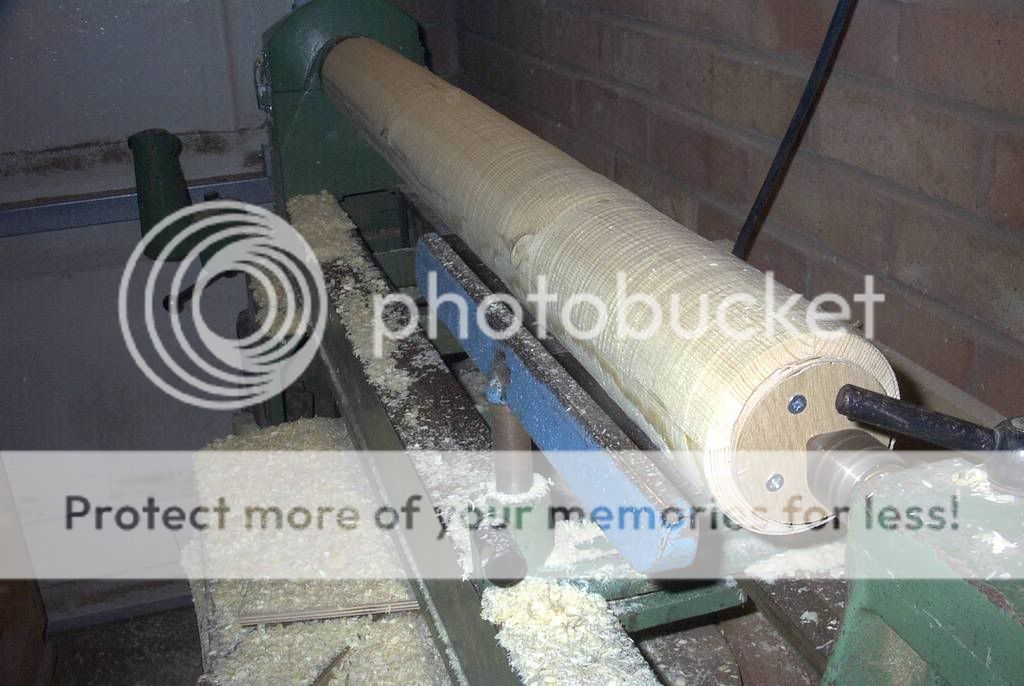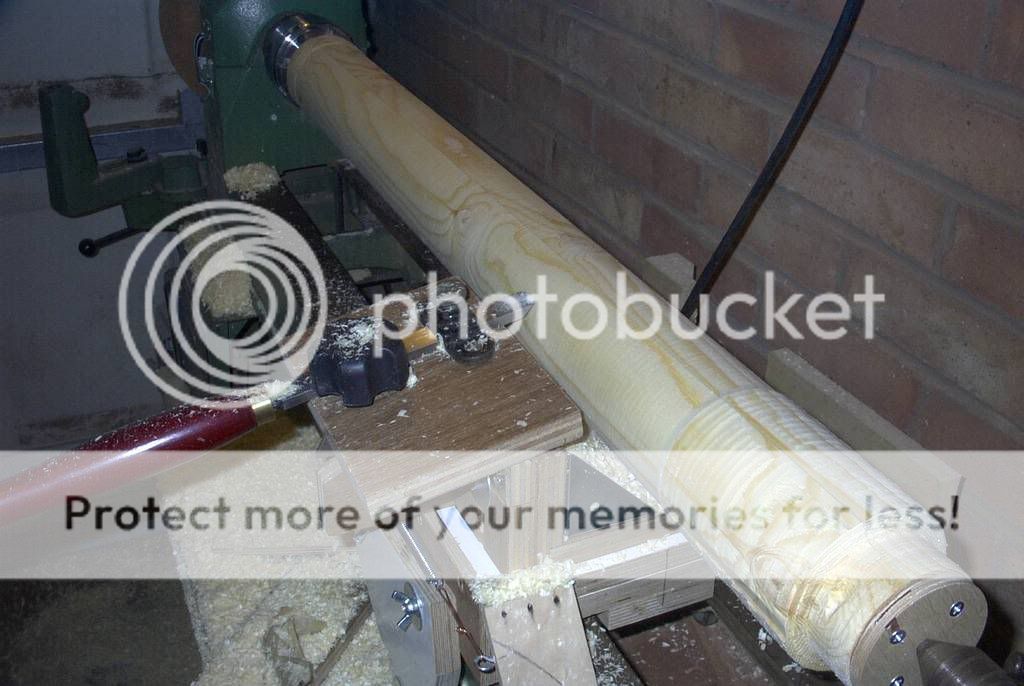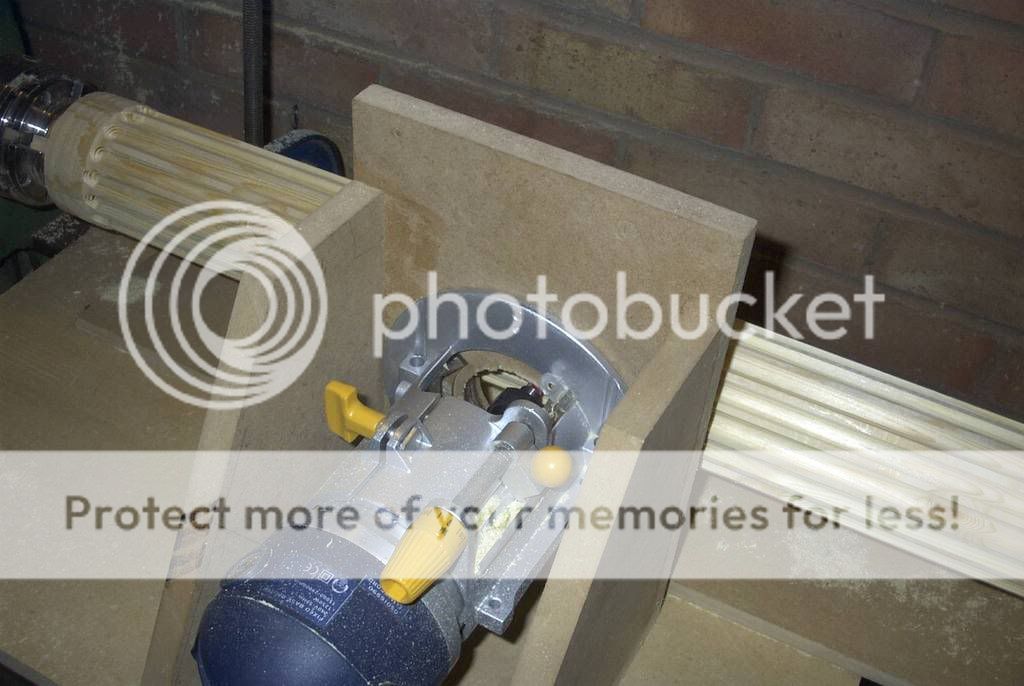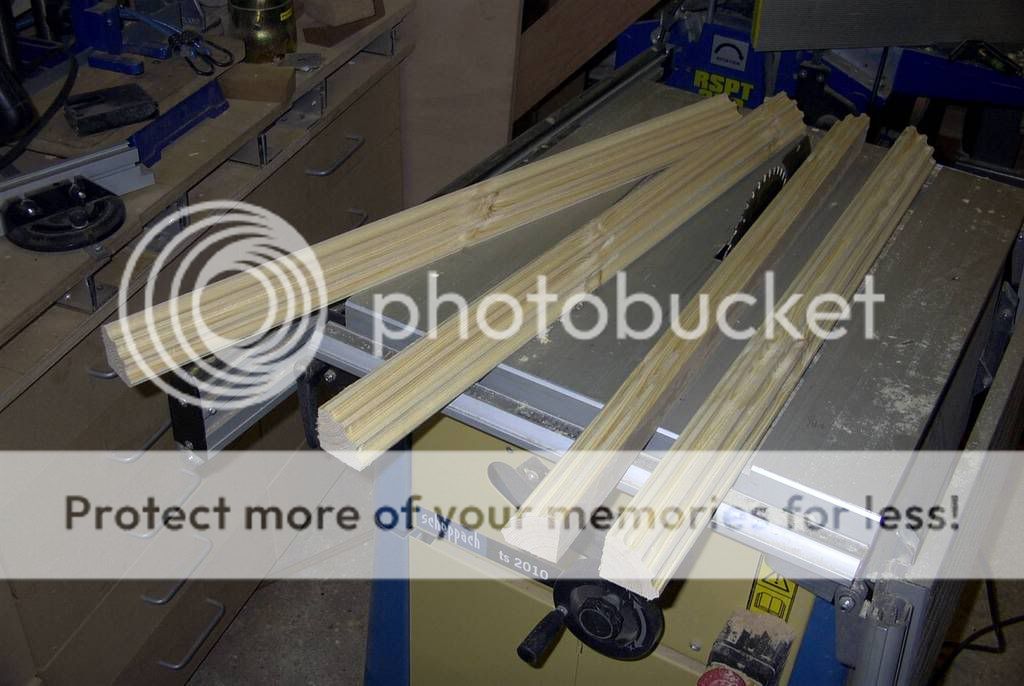sawdust maker
Established Member
a week or so ago I posted a thread of my attempts to make a jig using a router on my lathe to make some long 4" dia. collums. I failed  . Have a look at my previous posting "Some You Win Some You Loose".
. Have a look at my previous posting "Some You Win Some You Loose".
But once dropped the idea of using a router, things got better :lol: .
Have a look.

The finish is not bad. My test wood is fast grown softwood, so I am expecting a better finish on the hard wood. The accuracy is very good, less than 0.3mm.

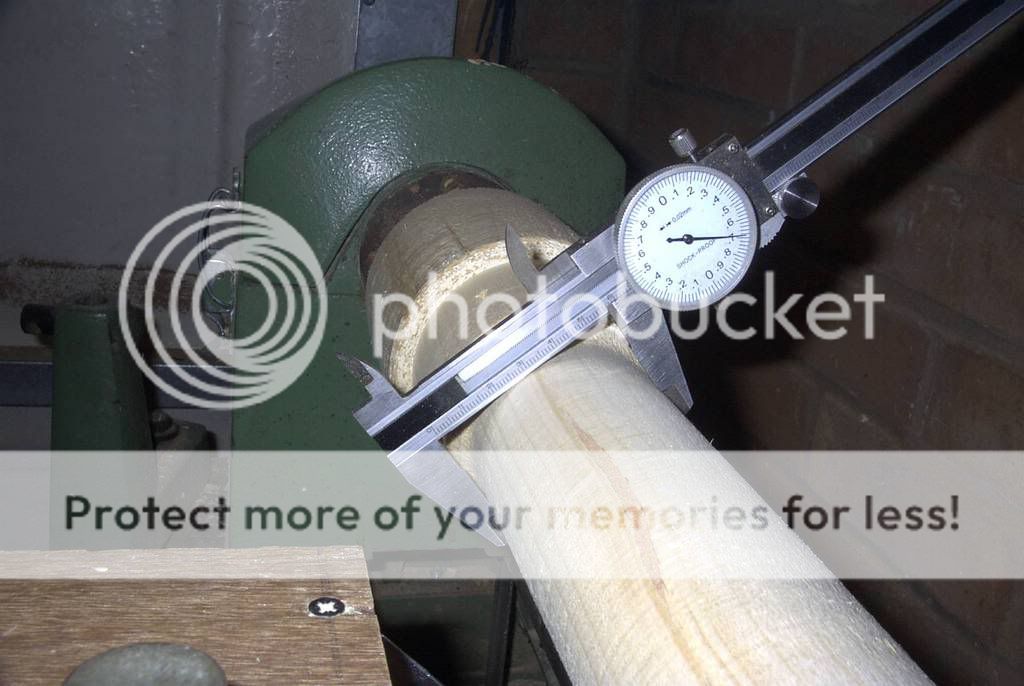
The jig uses the base of the original jig with the addition of spring loaded guards to clear shavings from the lathe bed.
I know it looks a bit Heath Robinson, but it works :lol:
Paul
But once dropped the idea of using a router, things got better :lol: .
Have a look.

The finish is not bad. My test wood is fast grown softwood, so I am expecting a better finish on the hard wood. The accuracy is very good, less than 0.3mm.


The jig uses the base of the original jig with the addition of spring loaded guards to clear shavings from the lathe bed.
I know it looks a bit Heath Robinson, but it works :lol:
Paul


































